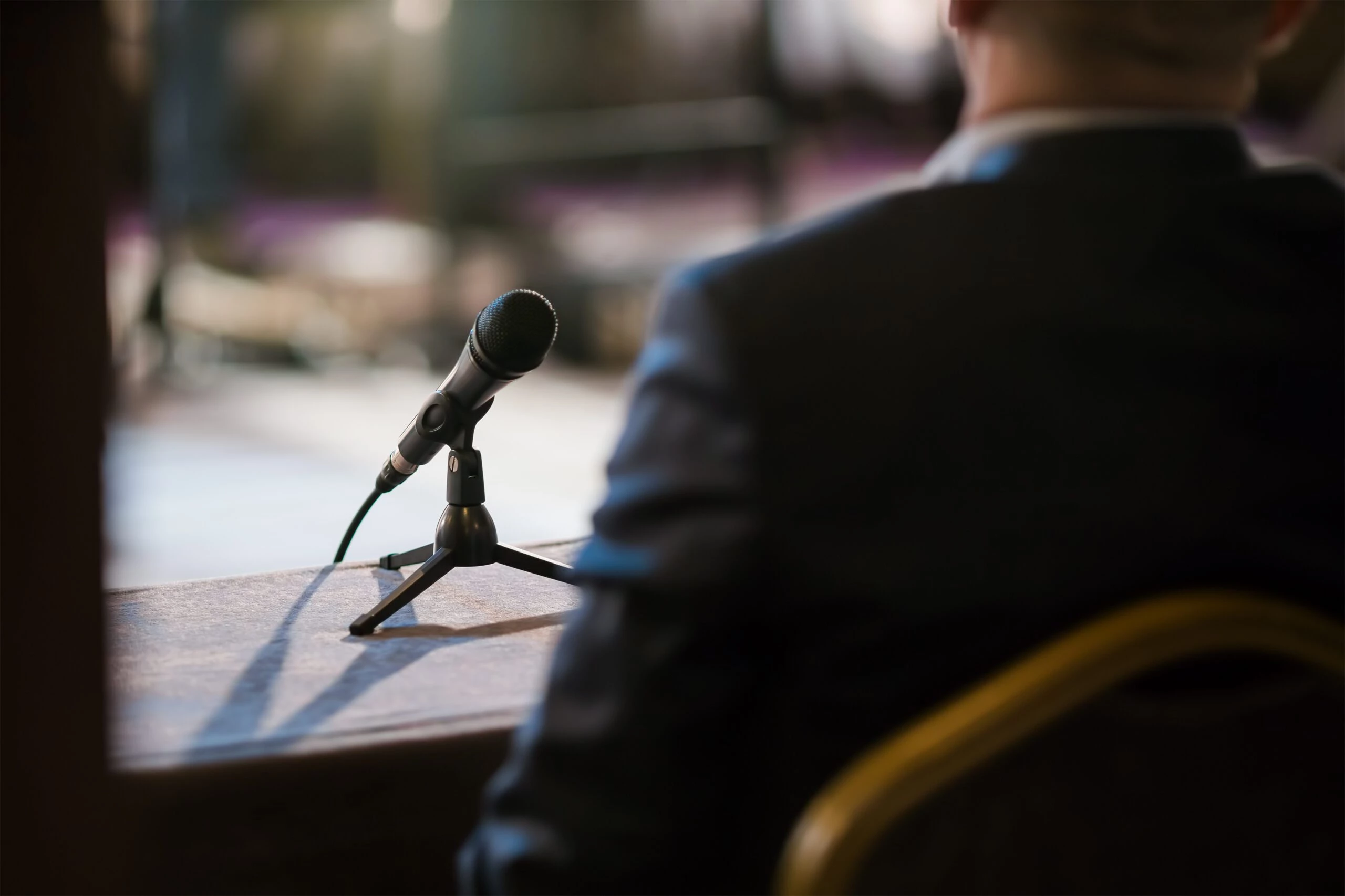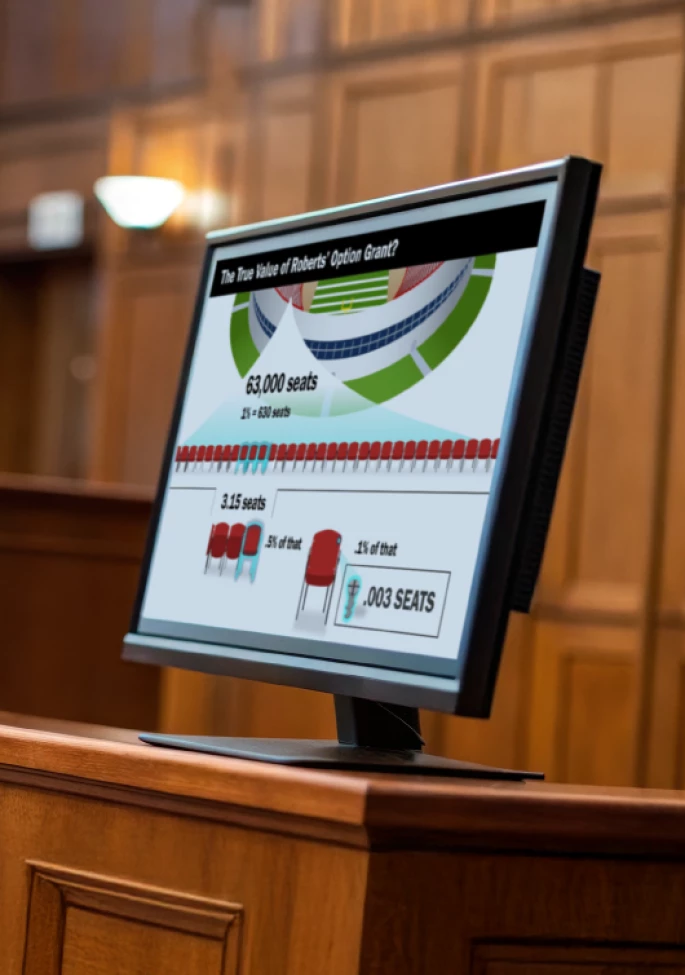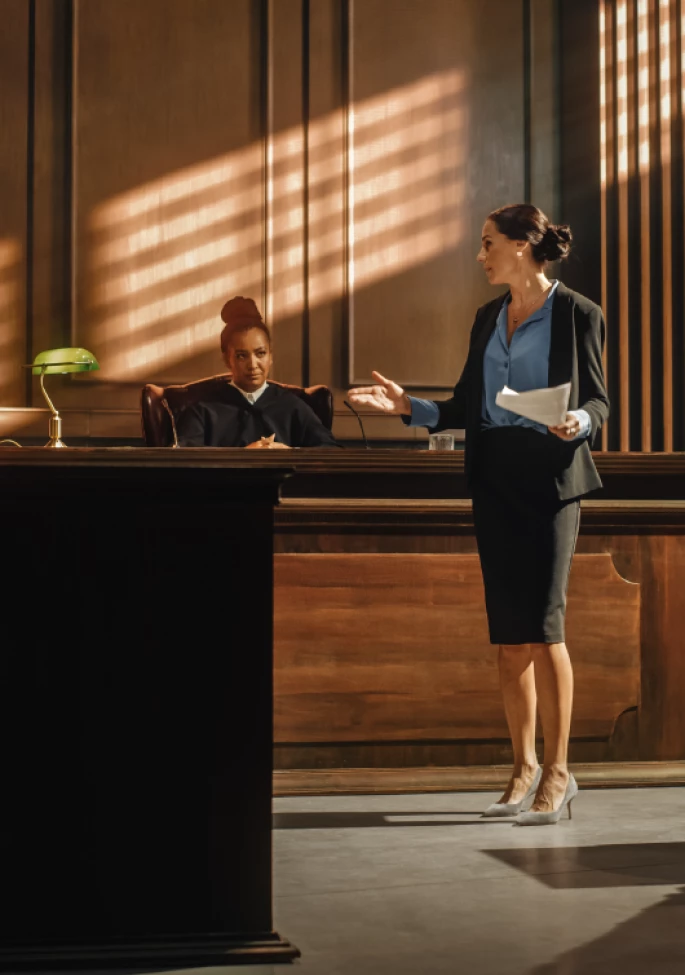Picture this: You’re in a room with several people. You’re having a discussion with all of them, but you only look at one person.
Is that how conversations are supposed to work? No, because when having a conversation, we have been socialized to include everyone in the conversation. We may not talk directly to everyone, but we include them with a quick glance.
Eye contact has the power to be inclusive, to bring observers of a discussion into the conversation.
Why Witness Testimony is a Two-Way Conversation
Now picture being in court: You’re the witness on the stand with lots of observers—i.e., the attorney asking the question, the judge, and the members of the jury. Where should the witness look when answering questions?
Witnesses always want to know in witness preparation where to look. It is easy to keep answers focused on the attorney and not look anywhere else. That is the safe thing to do. But the real audience is the jury.
We need to include the jury in the “conversation.”1 To do that, we tell witnesses in our witness preparation sessions to imagine the courtroom like a two-way conversation, i.e., a conversation between the attorney and the jury.
The Importance of Witness and Jury Eye Contact
Credibility, straight and simple. Communication research regarding non-verbal behavior over the years has been consistent on at least one finding—the power of eye contact. If a witness never looks at the jury, it will negatively impact his believability and, consequently, his credibility.
What this means is, if a witness is telling the truth and doesn’t look at the jury, more likely than not the jurors won’t believe him.
When Should a Witness Look at the Jury?
There is a certain balance necessary when trying to include the jury in the direct examination. We don’t want ping-pong action where the witness constantly looks to the attorney and then to the jury.
Our advice is, for short answers (e.g., Yes or No), the witness should continue to look at the attorney. However, for longer answers (e.g., those that take a few sentences to complete), witnesses should begin their answers to the attorney but naturally—as if in a conversation—turn and scan the jury box and complete their answers back to the attorney.
How Long Should a Witness Look at the Jury?
Over the past 20 years, jurors have consistently told us in post-verdict interviews that they feel uncomfortable when witnesses “stare” at them.
What typically happens is that a witness gets nervous and picks one or two jurors to look at. This behavior is perceived, using a trendy colloquial, as “creepy.” Jurors always say, “Why was he/she always looking at me?”
No one likes to be stared at. Our advice is to keep it to a scan and to the entire jury.
How to Get a Witness to Look at the Jury
Some witnesses get nervous and, in their attempt to focus on the question being asked, forget to look at the jury. A simple cue such as, “Please explain to the jury,” will reorient the witness to glance at the jury during their answer.
Conclusion
A witness’ credibility can be significantly impacted if they never or rarely look at the jury. Eye contact is critical to jurors’ perception of credibility.
Teach witnesses to treat both direct and cross examination as a “conversation” and include their audience—the jury—on the longer answers. There is nothing more unnatural than the insincere turn and look at the jury or the ping-pong effect. Keep it natural and glance at the jury.
1 We use “conversation” here to describe the nature of the behavior we want to mimic. It is not intended to imply that the witness drop their guard and treat the Q&A as a casual conversation.
This article won the LitigationWorld Pick of the Week award. The editors of LitigationWorld, a free weekly email newsletter for litigators and others who work in litigation, give this award to one article every week that they feel is a must-read for this audience.







